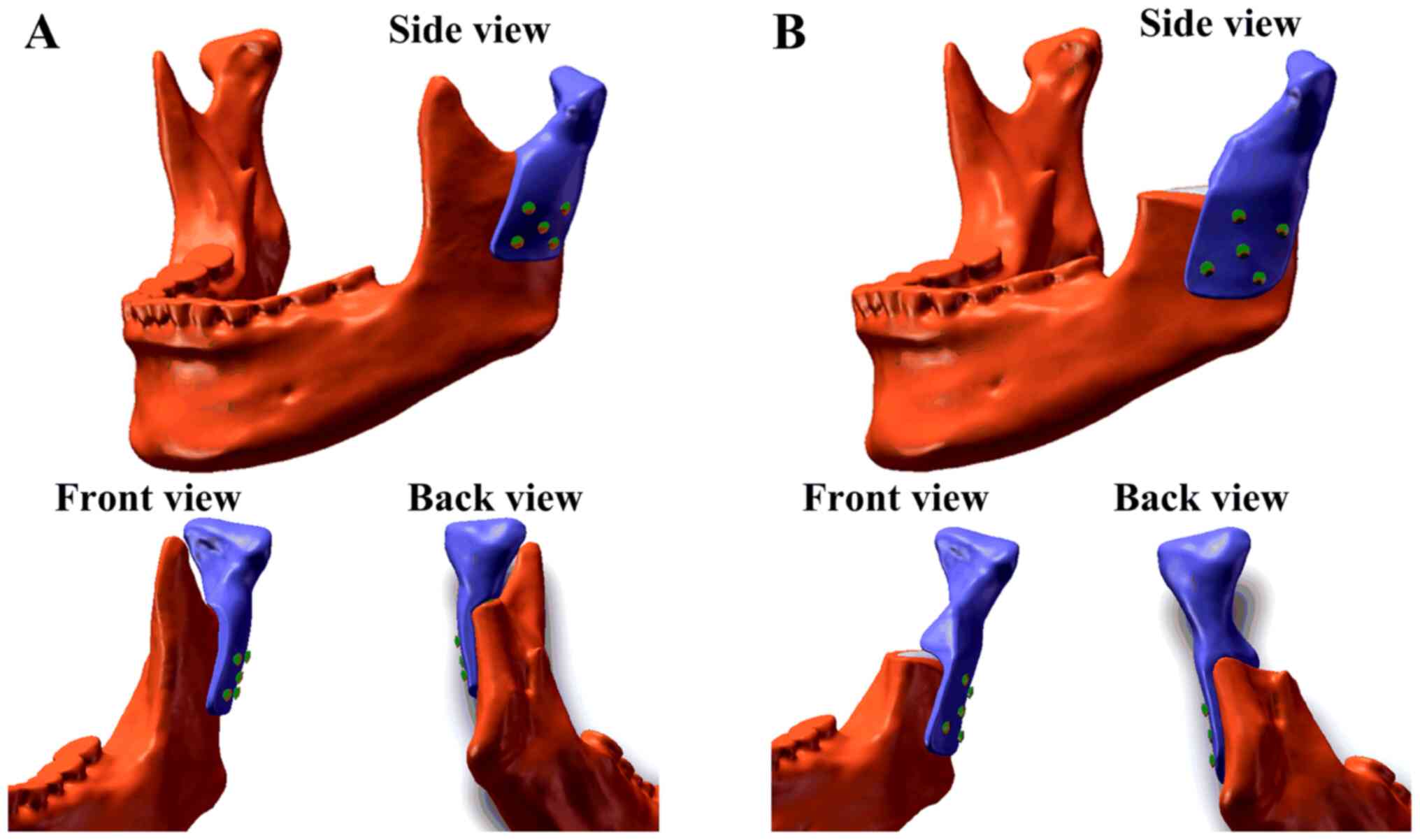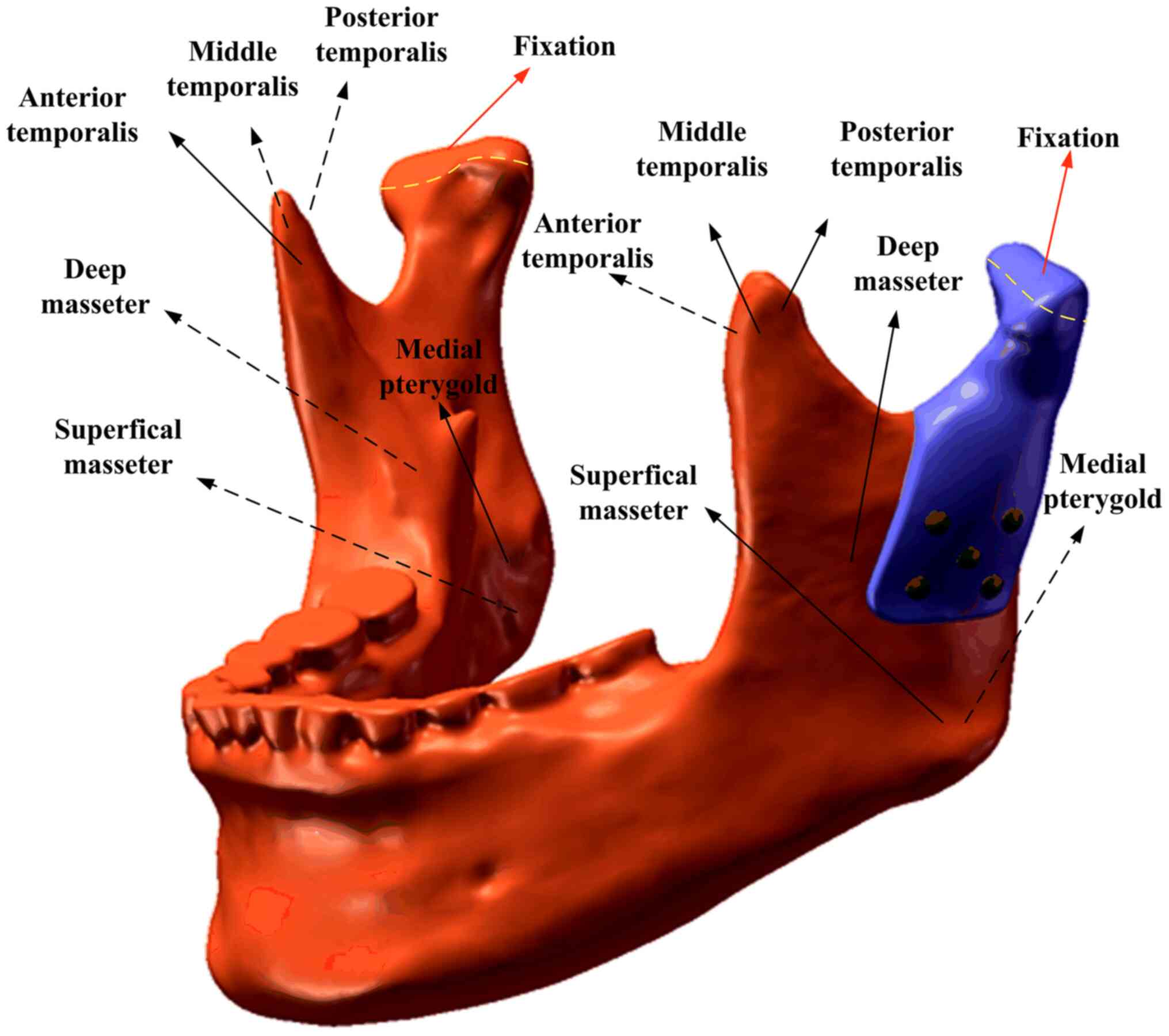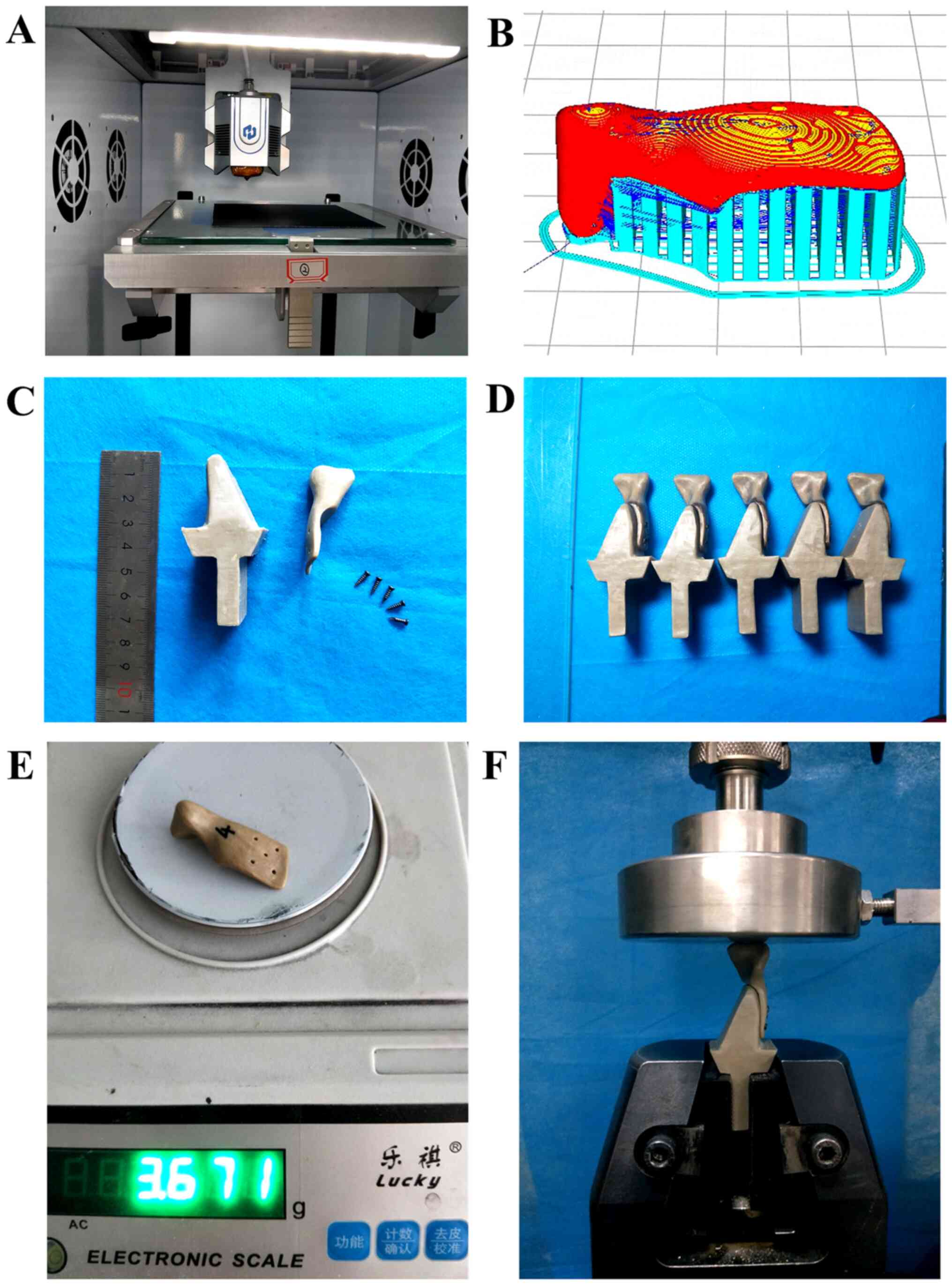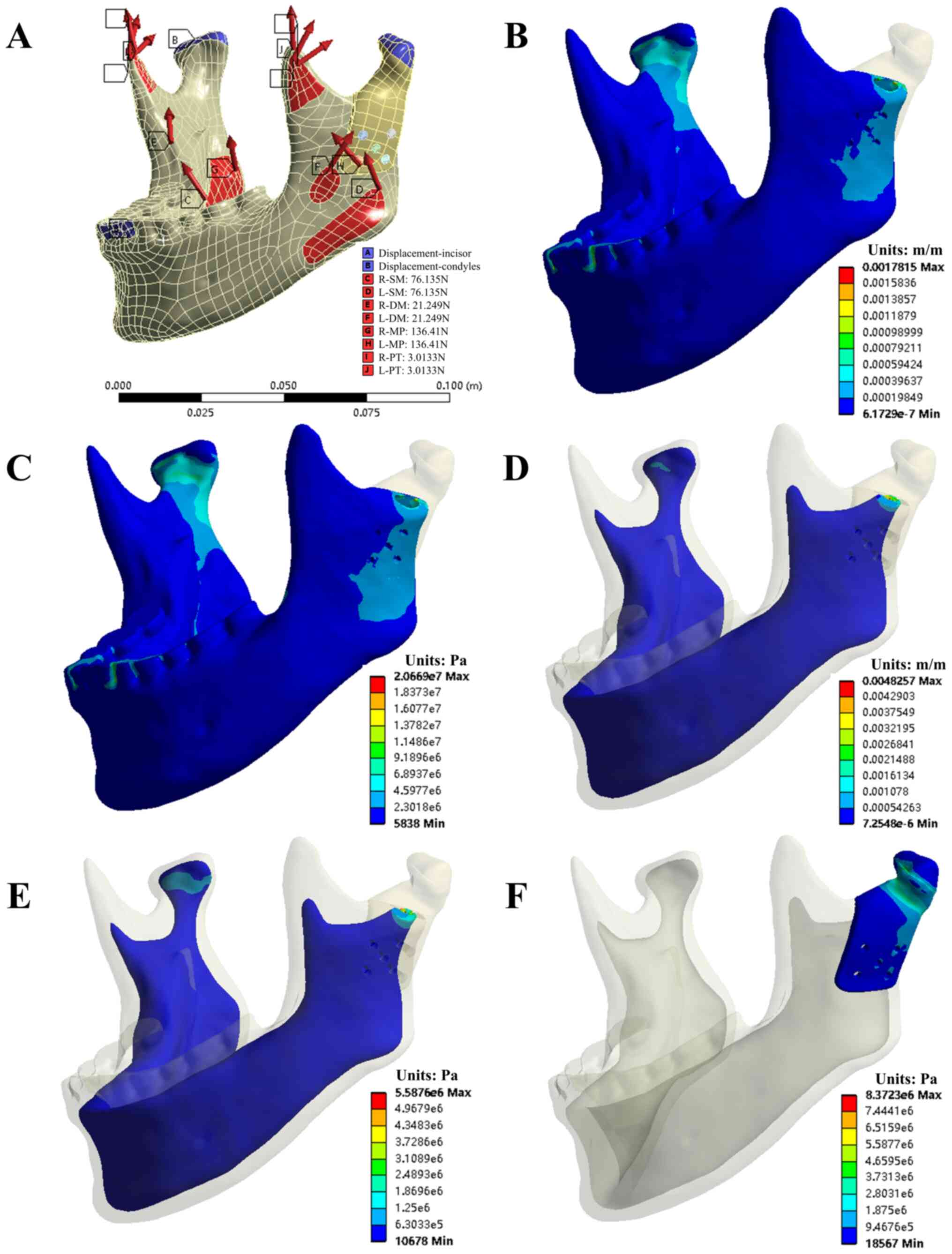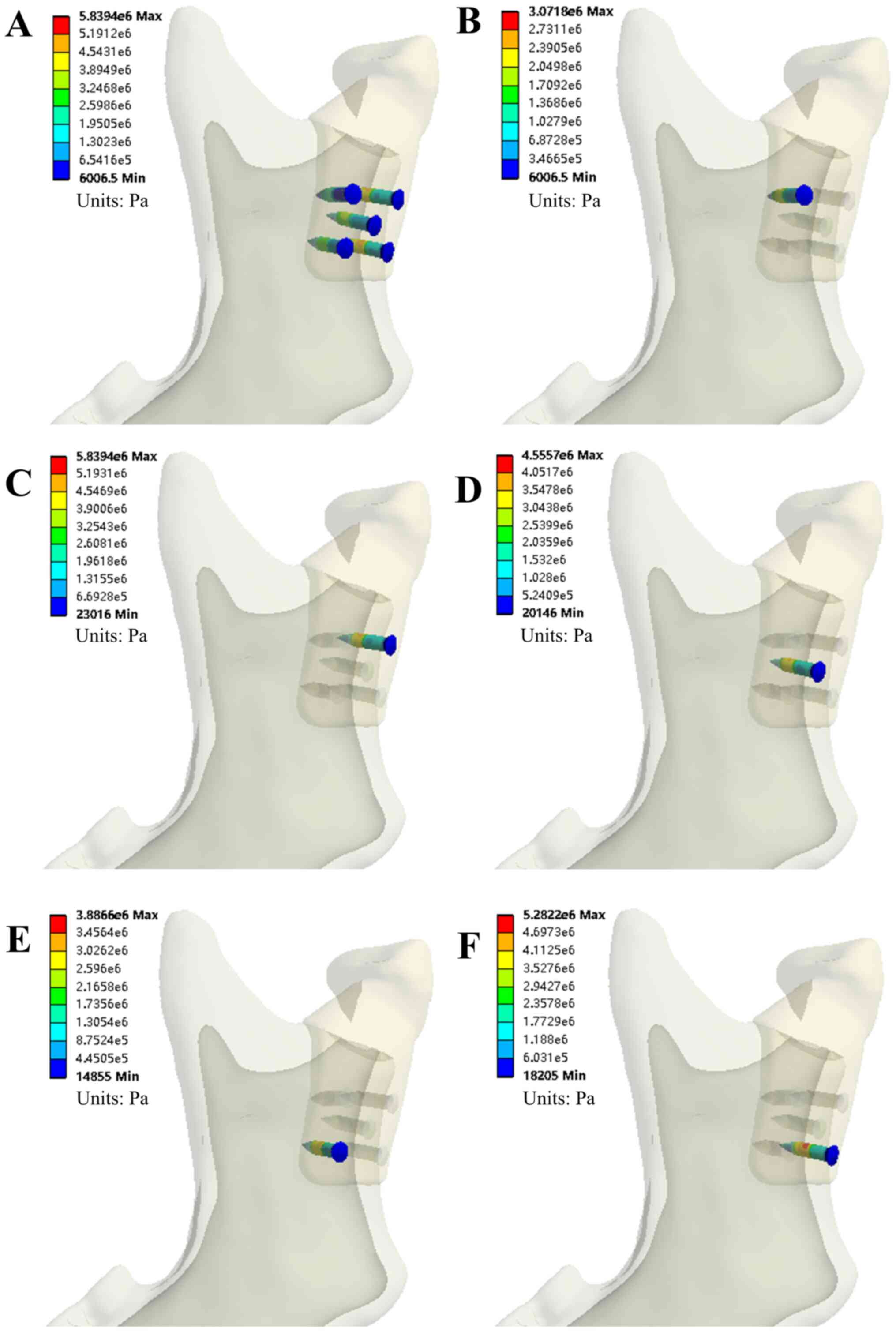|
1
|
Rodrigues YL, Mathew MT, Mercuri LG, da
Silva JSP, Henriques B and Souza JCM: Biomechanical simulation of
temporomandibular joint replacement (TMJR) devices: A scoping
review of the finite element method. Int J Oral Maxillofac Surg.
47:1032–1042. 2018.PubMed/NCBI View Article : Google Scholar
|
|
2
|
Jones R: The use of virtual planning and
navigation in the treatment of temporomandibular joint ankylosis.
Aust Dent J. 58:358–367. 2013.PubMed/NCBI View Article : Google Scholar
|
|
3
|
Wolford LM, Dingwerth DJ, Talwar RM and
Pitta MC: Comparison of 2 temporomandibular joint total joint
prosthesis systems. J Oral Maxillofac Surg. 61:685–690; discussion
690. 2003.PubMed/NCBI View Article : Google Scholar
|
|
4
|
Zhao Y, Wong SM, Wong HM, Wu S, Hu T,
Yeung KW and Chu PK: Effects of carbon and nitrogen plasma
immersion ion implantation on in vitro and in vivo biocompatibility
of titanium alloy. ACS Appl Mater Interfaces. 5:1510–1516.
2013.PubMed/NCBI View Article : Google Scholar
|
|
5
|
Niki Y, Matsumoto H, Otani T, Suda Y and
Toyama Y: Metal ion concentrations in the joint fluid immediately
after total knee arthroplasty. Mod Rheumatol. 11:192–196.
2001.PubMed/NCBI View Article : Google Scholar
|
|
6
|
Wang L, He S, Wu X, Liang S, Mu Z, Wei J,
Deng F, Deng Y and Wei S:
Polyetheretherketone/nano-fluorohydroxyapatite composite with
antimicrobial activity and osseointegration properties.
Biomaterials. 35:6758–6775. 2014.PubMed/NCBI View Article : Google Scholar
|
|
7
|
Sarot JR, Contar CM, Cruz AC and de Souza
Magini R: Evaluation of the stress distribution in CFR-PEEK dental
implants by the three-dimensional finite element method. J Mater
Sci Mater Med. 21:2079–2085. 2010.PubMed/NCBI View Article : Google Scholar
|
|
8
|
Jonkergouw J, van de Vijfeijken SE, Nout
E, Theys T, Van de Casteele E, Folkersma H, Depauw PR and Becking
AG: Outcome in patient-specific PEEK cranioplasty: A two-center
cohort study of 40 implants. J Craniomaxillofac Surg. 44:1266–1272.
2016.PubMed/NCBI View Article : Google Scholar
|
|
9
|
Lethaus B, Safi Y, ter Laak-Poort M,
Kloss-Brandstätter A, Banki F, Robbenmenke C, Steinseifer U and
Kessler P: Cranioplasty with customized titanium and PEEK implants
in a mechanical stress model. J Neurotrauma. 29:1077–1083.
2012.PubMed/NCBI View Article : Google Scholar
|
|
10
|
Zegers T, Ter Laak-Poort M, Koper D,
Lethaus B and Kessler P: The therapeutic effect of patient-specific
implants in cranioplasty. J Craniomaxillofac Surg. 45:82–86.
2017.PubMed/NCBI View Article : Google Scholar
|
|
11
|
Hu B, Yang X, Hu Y, Lyu Q, Liu L, Zhu C,
Zhou C and Song Y: The n-HA/PA66 cage versus the PEEK cage in
anterior cervical fusion with single-level discectomy during 7
years of follow-up. World Neurosurg. 123:e678–e684. 2019.PubMed/NCBI View Article : Google Scholar
|
|
12
|
Zhang J, Pan A, Zhou L, Yu J and Zhang X:
Comparison of unilateral pedicle screw fixation and interbody
fusion with PEEK cage vs. standalone expandable fusion cage for the
treatment of unilateral lumbar disc herniation. Arch Med Sci.
14:1432–1438. 2018.PubMed/NCBI View Article : Google Scholar
|
|
13
|
Kurtz SM and Devine JN: PEEK biomaterials
in trauma, orthopedic, and spinal implants. Biomaterials.
28:4845–4869. 2007.PubMed/NCBI View Article : Google Scholar
|
|
14
|
Han ML, Li MH, Ji X, Han RY, Zhang N, Cui
LH, Sun LF and Han CM: Establishment of TMJ defect models and
evaluation on repair effect of CFR-PEEK material artificial joint
in rabbits. J Jilin Univ Med Εd. 43:903–909. 2017.
|
|
15
|
Arabshahi Z, Kashani J, Rafiq M, Kadir A
and Azari A: Influence of the TMJ implant geometry on stress
distribution. Adv Mat Res. 488:991–995. 2012.
|
|
16
|
Hsu JT, Huang HL, Tu MG and Fuh LJ: Effect
of bone quality on the artificial temporomandibular joint condylar
prosthesis. Oral Surg Oral Med Oral Pathol Oral Radiol Endod.
109:e1–e5. 2010.PubMed/NCBI View Article : Google Scholar
|
|
17
|
Huang HL, Su KC, Fuh LJ, Chen MY, Wu J,
Tsai MT and Hsu JT: Biomechanical analysis of a temporomandibular
joint condylar prosthesis during various clenching tasks. J
Craniomaxillofac Surg. 43:1194–1201. 2015.PubMed/NCBI View Article : Google Scholar
|
|
18
|
Torstrick FB, Lin ASP, Potter D, Safranski
DL, Sulchek TA, Gall K and Guldberg RE: Porous PEEK improves the
bone-implant interface compared to plasma-sprayed titanium coating
on PEEK. Biomaterials. 185:106–116. 2018.PubMed/NCBI View Article : Google Scholar
|
|
19
|
Kashi A, Chowdhury AR and Saha S: Finite
element analysis of a TMJ implant. J Dent Res. 89:241–245.
2010.PubMed/NCBI View Article : Google Scholar
|
|
20
|
Chen X, Wang Y, Mao Y, Zhou Z, Zheng J,
Zhen J, Qiu Y, Zhang S, Qin H and Yang C: Biomechanical evaluation
of Chinese customized three-dimensionally printed total
temporomandibular joint prostheses: A finite element analysis. J
Craniomaxillofac Surg. 46:1561–1568. 2018.PubMed/NCBI View Article : Google Scholar
|
|
21
|
Rubin CT and Lanyon LE: Regulation of bone
mass by mechanical strain magnitude. Calcif Tissue Int. 37:411–417.
1985.PubMed/NCBI View Article : Google Scholar
|
|
22
|
Jaworski ZF, Liskova-Kiar M and Uhthoff
HK: Effect of long-term immobilisation on the pattern of bone loss
in older dogs. J Bone Joint Surg Br. 62-B:104–110. 1980.PubMed/NCBI View Article : Google Scholar
|
|
23
|
Lovell NC: Structure function, and
adaptation of compact bone. By R. Bruce Martin and David B. Burr.
Am J Phys Anthropol. 82:116–117. 1990.
|
|
24
|
Mellal A, Wiskott HWA, Botsis J, Scherrer
SS and Belser UC: Stimulating effect of implant loading on
surrounding bone. Comparison of three numerical models and
validation by in vivo data. Clin Oral Implants Res. 15:239–248.
2004.PubMed/NCBI View Article : Google Scholar
|
|
25
|
Sugiura T, Horiuchi K, Sugimura M and
Tsutsumi S: Evaluation of threshold stress for bone resorption
around screws based on in vivo strain measurement of miniplate. J
Musculoskelet Neuronal Interact. 1:165–170. 2000.PubMed/NCBI
|



